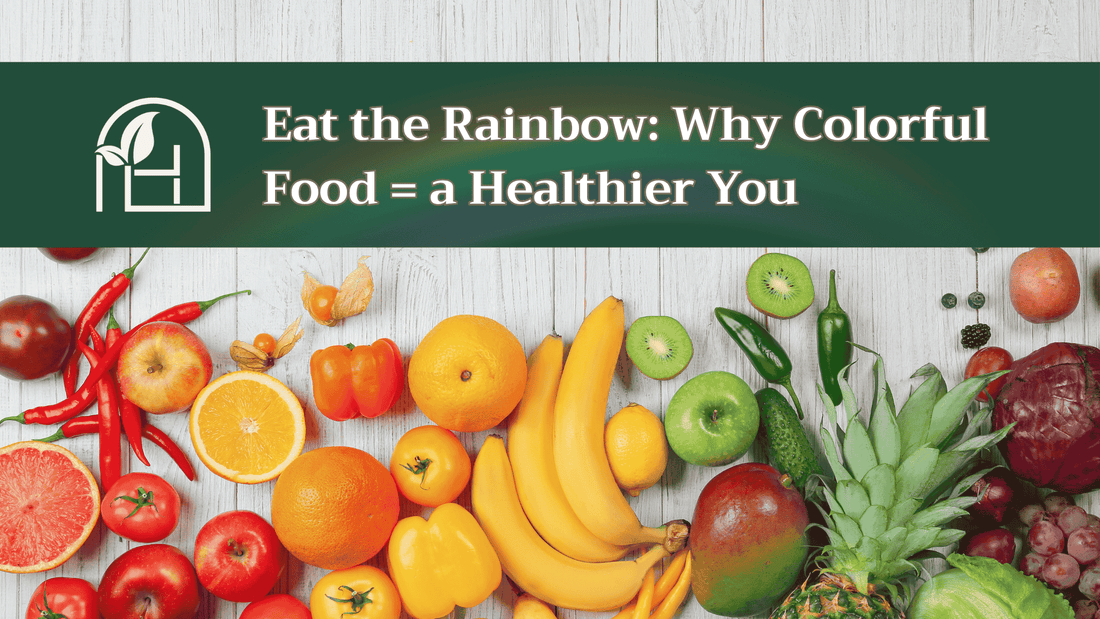
Eat the Rainbow: Why Colorful Food = a Healthier You
Because your plate deserves more color than just beige and brown.
🌈 What Is the Rainbow Diet?
Nope, it’s not a trendy new detox or a unicorn-themed juice cleanse. The Rainbow Diet simply means eating a variety of colorful fruits and vegetables every day.
The idea is:
Each color = different nutrients = different health benefits.
So by eating a rainbow, you’re covering your bases—vitamins, minerals, antioxidants, fiber, and more.
🧠 Why Color Matters in Your Food
Ever noticed that nature doesn’t make bright blue chips or neon green cupcakes?
That’s because in the natural world, color signals nutrition.
Fruits and veggies get their vibrant hues from plant compounds called phytonutrients—natural chemicals that help protect the plant (and your body!) from harm.
These compounds aren’t just pretty—they’re powerful tools for boosting immunity, fighting inflammation, and protecting against chronic disease.
Health Benefits of Eating the Rainbow
Let’s take a bite out of each color group:
❤️ Red (e.g., tomatoes, strawberries, watermelon, red peppers)
Key nutrients: Lycopene, vitamin C, anthocyanins
Benefits:
- Supports heart health
- Protects against certain cancers
- Anti-inflammatory
🧡 Orange & Yellow (e.g., carrots, oranges, mangoes, pumpkin, corn)
Key nutrients: Beta-carotene, vitamin C, lutein
Benefits:
- Boosts immunity
- Supports eye health
- Promotes healthy skin
💚 Green (e.g., spinach, broccoli, kiwis, avocados, green beans)
Key nutrients: Chlorophyll, folate, fiber, vitamin K
Benefits:
- Supports detoxification
- Strengthens bones
- Balances hormones
💙💜 Blue & Purple (e.g., blueberries, grapes, eggplant, red cabbage)
Key nutrients: Anthocyanins, resveratrol
Benefits:
- Protects brain and memory
- Fights aging
- Improves circulation
🤍 White & Brown (e.g., garlic, onions, mushrooms, cauliflower, bananas)
Key nutrients: Allicin, potassium, fiber
Benefits:
- Boosts immunity
- Supports heart health
- Reduces cholesterol
🍽️ How to Build a Rainbow Plate (Without Overthinking It)
You don’t need to count servings or make a spreadsheet—just aim for at least 3–5 different colors a day.
Here are some easy ways to sneak in the spectrum:
- 🥗 Add red tomatoes, yellow bell peppers, and green lettuce to your salad
- 🥣 Throw blueberries and bananas into your oatmeal
- 🌮 Top your tacos with purple cabbage and avocado
- 🥤 Blend a smoothie with berries, spinach, and mango
- 🍛 Cook stir-fry with mushrooms, carrots, and snow peas
Remember: Frozen and dried fruits/veggies count too!
⚠️ Don’t Worry About Perfection
This isn’t about forcing yourself to eat kale if you hate it. The Rainbow Diet is about variety and fun. Each color brings its own benefits, so mix and match what you enjoy.
Even small swaps—like choosing sweet potato over white bread—can make a difference.
💬 Final Thoughts: A Colorful Plate = A Happier Body
Your body thrives on diversity—and so does your gut, brain, skin, and heart.
The more natural colors you eat, the better your body is equipped to repair, renew, and protect itself.
So next time you’re grocery shopping or cooking dinner, just ask:
“What color am I missing today?”
Add it in. Enjoy the flavor. And know that with every bite, you’re giving your body exactly what it needs—no diet labels required.
Eat colorfully. Live vibrantly. One rainbow plate at a time. 🌈🍽️
